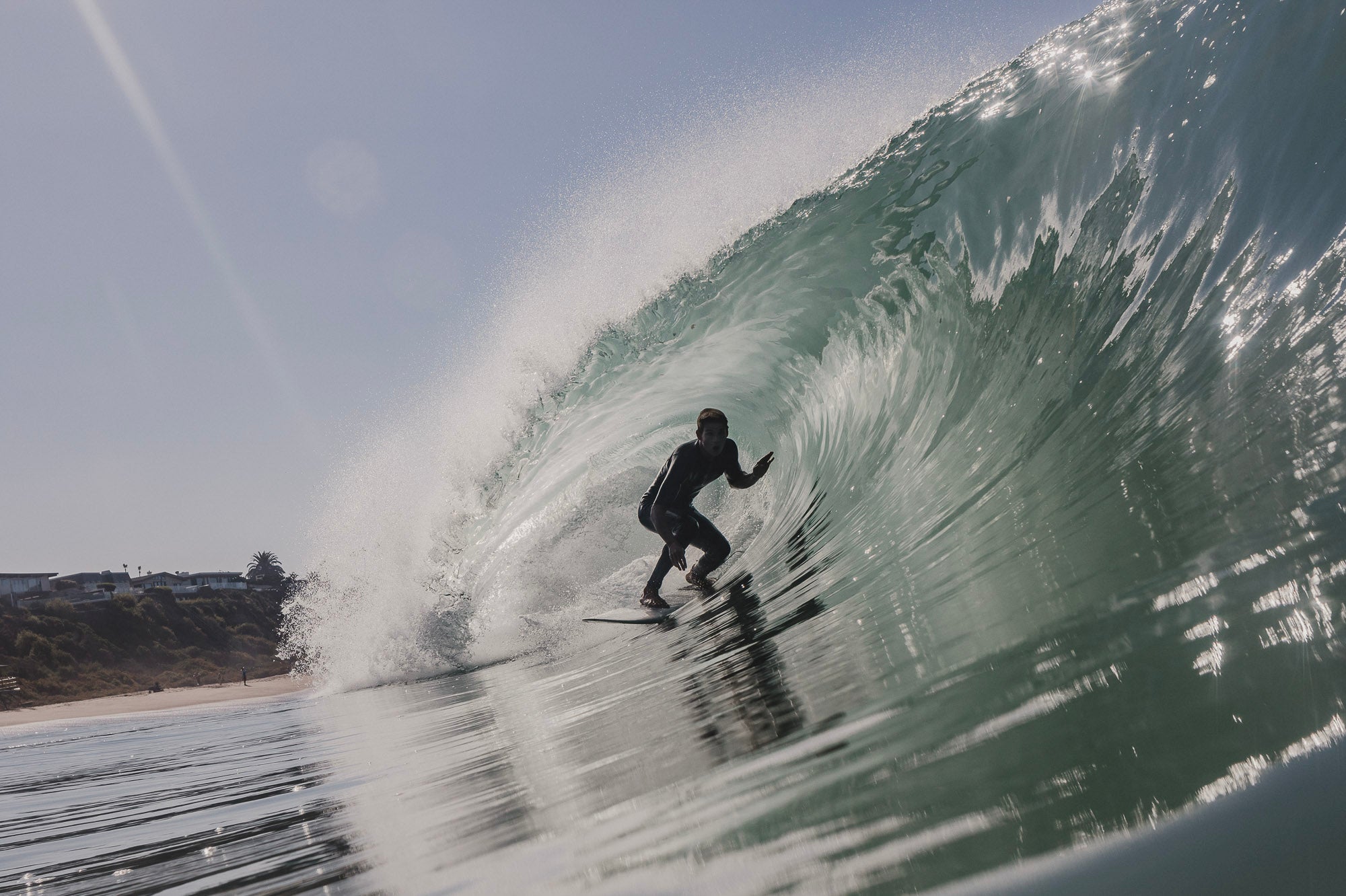How To Barrel Ride

What type of board and skill level will I need?
Tube rides are very technical, which requires a certain type of board. First, shorter boards are easier to tube ride, but it cannot be any type of shorter board. You will generally need and board that has a good amount of rocker to fit in the pocket, along with a narrower tail. Tube rides are steep, and boards with a narrow tail, like our ATV, Rocket Fish and Poacher, will fit and hold in the wave better.
Second, it is still very possible to get barreled on a longboard, but the board should be high performance, like out Ultimate Longboard. Furthermore, tube riding on a longboard requires proper positioning. If you find yourself high or low lining too much, it will be harder to adjust back up or down, so your line on the wave must be more precise.
Last, tubes rides are only an option for intermediate to advanced surfers. Steep barreling waves are simply not suitable for a newer surfer. So master your pop up, have a good grasp on wave knowledge, and know how to stay in the pocket of a wave.

What kinds of waves will barrel?
A wave will only barrel if it is steeper, fast, and powerful. This means shallow reef breaks and beach breaks will have a higher likelihood for tubing. There are spots which are well known to tube, while others will not. Research the waves in your area, and wait for a good swell to find your best chance at tubing riding.
Second, some waves may tube, but be closeouts. This might offer good practice for you in setting up for a tube, but you will have no chance of making it out of a tube unless you go to a spot that is makeable.
Last, overall weather conditions are a big factor in whether or not a wave will tube or not. If the wind is on shore, there will likely be no barrels, but if
How to get barreled?
Step 1: Takeoff in the right position
Positioning during your takeoff is one of the most important factors in riding the tube. Most often you will be too far ahead of the section, so take off deeper than you think you should on a wave that is steep enough to barrel. If the wave is not running down the line, and you think you will need to slow yourself down for the section, take off straight, then perform a deeper bottom turn to put you into the pocket of the wave.
Do not overthink this step, like any proper read on the wave, get yourself to the power pocket of the wave. If the wave is steep enough, you will set yourself up well for the tube
Step 2: Set your line and get low!
Once you've performed your take off, focus on setting your line. Keep the board in the middle of the wave face. If your board is too high up on the wave face, the wave will carry you up and over the falls! If too low, you will get hit with the falling lip.
Hold your line as the lip of the wave moves over you. It is easy to forget to hold your line with the excitement of getting barreled, so don't forget the fundamentals.
Last, bend your knees to get low! Too often will a surfer fumble a great tube by standing too tall and getting the lip to the face - so get lower than you think you need to.
Step 3: Drag your arm in the water
To optimize the tube and control speed, you might need to put your hand in the water to slow you down. This is only necessary if you feel like you might be going too fast

Safety Tips:
Waves that barrel break over shallow reef or sand, so take these safety measure seriously
- Don't surf waves that are too far beyond your skill level. Start at your local beach break before venturing to an expert wave like pipeline
- Cover your head during a wipeout in case you get hit by your board or hit the bottom
- Don't surf barreling waves alone - have a friend who can look out for you
- Don't take unnecessary risks like packing big closeouts
- Practice on one of our Hybrid Epoxy Soft Top boards to limit potential for injury (a soft deck will add confidence and offer less impact if hit by the board)

